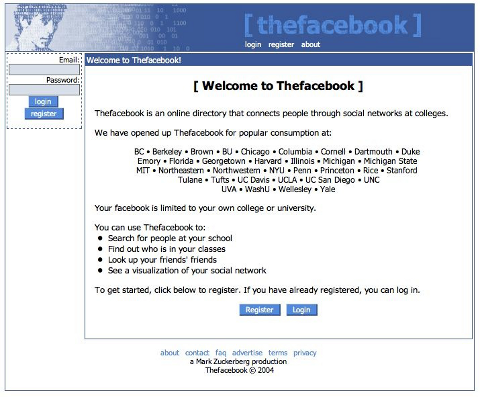Times Columnist Roger Cohen Borrows Quotes
The New York Times columnist Roger Cohen engages in some ethically questionable journalism in his column Thursday about people sharing too much on Facebook and Twitter.
In his commentary, Cohen shares this lament:
Now I was determined to get through 2012 without doing a peevish column ... but everyone has a tipping point. Mine occurred when I came across this tweet from Claire:
"Have such a volcanically deep zit laying roots in my chin that it feels like someone hit me with a right cross."
Good to know, Claire.
I was just recovering from that when I found Deanna tweeting that she had "picked up pet food" and was heading to "the dreaded consult on colon stuff. The joys of turning 50." As for Kate she let the world know the status of her labor: "Contractions 3 minutes apart and dilated at 2 cm."
Social media does not mean that you have to be that social.
Cohen makes it sound as if these are people he interacts with on Twitter and Facebook, but it's far more likely that he found them on Oversharers.Com, a site that's the top Google search result for the term "oversharing." The quotes from Claire and Deanna are the first and third entries on the second page of the site's archive. The zit tweet was something Claire shared with her followers in February 2010. Deanna's "colon stuff" status update, which Cohen incorrectly calls a tweet, was posted to her Facebook friends no later than July 2010, if the date on Oversharers.Com post is correct.
He never credits Oversharers.Com as the source of these quotes. There was no "tipping point" that roused his inner curmudgeon about people sharing too much. He was fishing for examples to write a column around. More seriously from a journalistic standpoint, Cohen has no way of knowing if the Deanna quote is real. It's just a screen capture on a humor site with no link or full name of the author on Facebook. Someone could have made it up.
Regarding Cohen's premise that we're living in a too-much-information age, that's hard to argue.
But there's something obnoxiously elitist about a New York Times columnist ridiculing ordinary people for sharing observations about their lives on social networks to an audience of people who've specifically asked to receive them. Two years ago, Cohen used his column to share the text of a suicide note written by his mother:
That jolted me -- and sent me back to my mother's suicide note of July 25, 1978: "It's as though I've turned to stone. I can't relate, I can't communicate and I can no longer bear the pain and gloom I cause to those I love most. ... At present I am filled only with self-hate. I do love my family and dear friends but I can't go on and on like this."
My mother survived, just. But the bi-polar state that led her to try to take her life that day never entirely relaxed its grip.
What would Cohen have thought if he found something like that on a Facebook wall?
Update: The Times has acknowledged that Cohen made improper use of those quotes.
No Social Networking in 'The Social Network'

I saw the film The Social Network for the first time last night after letting it sit in a Netflix envelope on a dresser for 10 months. I'm losing the will to watch physical copies of movies. Too much work, like calling somebody on a rotary phone whose number has a lot of eights and nines.
The movie's great, but there's an interesting omission: None of the main characters is shown using Facebook to improve their social lives in any meaningful way.
Facebook founder Eduardo Saverin is depicted as not knowing how to use the site to change his relationship status, causing his overly attached girlfriend to go Burning Bed on him. President Sean Parker is shown with an extremely vibrant drug- and alcohol-fueled social life that needs no help from online friending.
Until the ending (which I won't spoil), the only time anyone puts Facebook to use is when founder Mark Zuckerberg creates a fake account to spur strangers to help him cheat on an art test at Harvard.
The movie touts the revolutionary nature of social networking repeatedly without any character doing anything of note with all those personal connections.
The World Already Has Enough Artists?
I maintain a list on Twitter of all Hugo Award-nominated best novel writers who use the service. A lot of cool stuff comes over the relatively low-traffic list, particularly related to science and creativity. At a Connecticut Forum event for high school students, the comics and science fiction writer Neil Gaiman was questioned by a teen who had been discouraged from being a director because there are "enough artists in the world."
Gaiman's answer is perfect.
Last Note for Brahms and the Year 1896
The world's oldest person, Besse Cooper, died Tuesday at a nursing home in Monroe, Ga. "She got up this morning, had a big old breakfast and got her hair fixed," said her son Sidney, 77. Cooper lived 116 years and 100 days, which made her the eighth oldest person ever among documented supercentenarians.
She was a schoolteacher until 1929, when she left to start a family. All four of her children survive her. Twenty four years old when women got the right to vote in 1920, Cooper only missed two presidential elections from then on. She didn't vote last month and skipped the 1948 election with her husband because they believed Thomas Dewey would easily defeat Harry Truman.
The oldest person now becomes Dina Manfredini of Johnston, Iowa. The line of oblivion, the start date for the living history of the world, jumps forward eight months to Manfredini's birthday on April 4, 1897.
With Cooper's death, there's no longer a living person who could have received the news that William McKinley defeated William Jennings Bryan in the race for U.S. president (Nov. 3, 1896), observed the enormous sea monster that washed up on Anastasia Island, Fl. (Nov. 30, 1896) or heard John Philip Sousa give his first performance of Stars and Stripes Forever (Dec. 25, 1896).
No more people are around who could have seen the crash at Crush (Sept. 15, 1896), a disastrous publicity stunt in which railroad man William George Crush attracted 40,000 people to a site three miles south of West, Texas, to witness an intentional train crash. The site became known as Crush, Texas, a city that existed for just one day, in which it was the second-largest in the state. In the collision, the engine boilers unexpectedly exploded, sending large debris into the crowd that killed three spectators.
Cooper was the last person who could have known dynamite inventor and peace champion Alfred Nobel (died Dec. 10, 1896), gone around with Ferris wheel inventor George Washington Gale Ferris, Jr. (Nov. 22, 1896) or been lulled to sleep by German composer Johannes Brahms (April 3, 1897).
Step Right Up and Win Some Crap
I'm running a presidential prediction contest on the Drudge Retort today:
President Obama will win re-election even though Mercury is in retrograde, claims Psychic Nikki. See if you can do better than this observer of the spirit world and enter the Drudge Retort's presidential prediction contest. The winner will receive a $50 Amazon.Com gift certificate and a life-size cardboard Joe Biden. To enter, post a comment here predicting the percentage of the vote that President Obama, Mitt Romney and Everybody Else will receive and the number of electoral votes that Obama, Romney and Everybody Else will receive. Entries must be submitted before Dixville Notch, N.H., reports its vote early Tuesday morning.
You don't have to be a current Retort member to participate. Just join the site and post your prediction in the discussion.
Glenn Kessler's Fact Checking is for the Birds
Glenn Kessler, the fact-checking columnist of the Washington Post, often employs logic that's more factually dubious than the claim he's covering.
Here's his explanation for why he gives President Obama four Pinocchios for saying in ads that Mitt Romney wants to kill Big Bird:
Romney may have been off base in suggesting PBS funding has much to do with the deficit, but that's no excuse for the Obama campaign to declare that means the demise of a popular children's character. According to the financials of Sesame Workshop, Big Bird should do just fine, with or without public funding.
Romney said during the debate he wants to kill funding for PBS, citing Big Bird and Jim Lehrer as examples of its programming.
PBS receives 15 percent of its funding from the federal government, which amounts to around $1 per American per year. But some of its member stations are not funded as well as others, as PBS explains:
These dollars are particularly important to smaller stations. While the appropriation equals about 15 percent of our system's revenue, this is an aggregate number. For many stations, the appropriation counts for as much as 40-50 percent of their budget.
If Romney becomes president and eliminates funding to PBS, some of its stations will lose half of their funding overnight and almost certainly shut down. For those viewers, this will kill Big Bird and all the rest of the programming that public television provides.
The issue isn't whether Sesame Street could survive without PBS. It would, because the show has 43 years of popularity and generates millions in licensing revenue. The issue is whether PBS stations could survive without federal funding.
The Obama ads are using Big Bird as a metaphor for the programming that would disappear from the homes of Americans if Romney killed PBS funding. I think it's a fair use of rhetoric that doesn't deserve to be called a lie.
This Week's U.S. War Casualties
The deaths of seven U.S. service members in Afghanistan were announced this past week by the Department of Defense.
Four Army soldiers died Sept. 16 in Zabul Province when they were shot by Afghan police after coming to their aid at a security checkpoint that was attacked by insurgents. One of the four killed was Pfc. Genaro Bedoy, 20, of Amarillo, Texas, who had a wife and seven-week-old baby girl (pictured above).
Bedoy played wide receiver and defensive back for River Road High School. "Genaro was a good kid. He always worked hard for me," his football coach, Bryan Welps, told the Lubbock Avalanche-Journal. The coach said Bedoy talked to him about his decision to join the Army. "I thought it would be good for him," he said.
Bedoy was assigned to 52nd Infantry Regiment, 3rd Stryker Brigade Combat Team, 2nd Infantry Division, Joint Base Lewis-McChord, Wash.
Also killed were Sgt. Sapuro B. Nena, 25, of Honolulu, assigned to 2nd Battalion, 3rd Infantry Regiment, 3rd Stryker Brigade Combat Team, 2nd Infantry Division, Joint Base Lewis-McChord, Wash.; Spc. Joshua N. Nelson, 22, Greenville, N.C., assigned to 202nd Military Intelligence Battalion, 513th Military Intelligence Brigade, Fort Gordon, Ga.; and Pfc. Jon R. Townsend, 19, Claremore, Okla., assigned to 1st Battalion, 23rd Infantry Regiment, 3rd Stryker Brigade Combat Team, 2nd Infantry Division, Joint Base Lewis-McChord, Wash.
On Sept. 15, Marine Sgt. Bradley W. Atwell, 27, of Kokomo, Ind. and Marine Lt. Col Christopher K. Raible, 40, of North Huntingdon, Pa., died during a Taliban attack on their base in Helmand Province. Fifteen heavily armed insurgents wearing U.S. Army uniforms and suicide vests snuck into Camp Bastion and incinerated six U.S. fighter jets, each worth about $25 million.
When the attack began, Raible was heading to video-chat with his wife and three children after dinner. Armed with a handgun, Raible rushed to the scene and coordinated the Marines' response before he and Atwell were killed by wounds suffered in an explosion. "It was very fitting that he was killed leading his men from the front," said Maj. Greer Chambless.
Raible was assigned to Marine Attack Squadron 211, Marine Aircraft Group 13, 3rd Marine Aircraft Wing, I Marine Expeditionary Force. Atwell was assigned to Marine Aviation Logistics Squadron 13, Marine Aircraft Group 13, 3rd Marine Aircraft Wing, I Marine Expeditionary Force.
On Sept. 20, Army Sgt. Jason M. Swindle, 24, of Cabot, Ark., died in Panjwa'l of injuries sustained when he was attacked by a rocket-propelled grenade while on mounted patrol. Swindle was assigned to 1st Battalion, 64th Armor Regiment, 2nd Heavy Brigade Combat Team, 3rd Infantry Division, Fort Stewart, Ga.



